Updates
Relief and recovery for animals and people in Myanmar
Read moreCan you spot these animals with amazing camouflage?
From changing colours to mimicking the lines of grass with their stripes, many animals have incredible abilities to become virtually invisible in their surroundings. Blending in can help these animals hide from predators, stalk prey, and stay safe from humans who might hunt them.
Camouflage is an example of an adaptation many species have thanks to millions of years of evolution. Over time, the individuals with the best camouflage have survived and passed their traits down to the next generation, giving these modern-day species the key to staying safe or being successful hunters.
Here are 18 animals that exhibit incredible camouflage—don’t blink, or you might miss them.
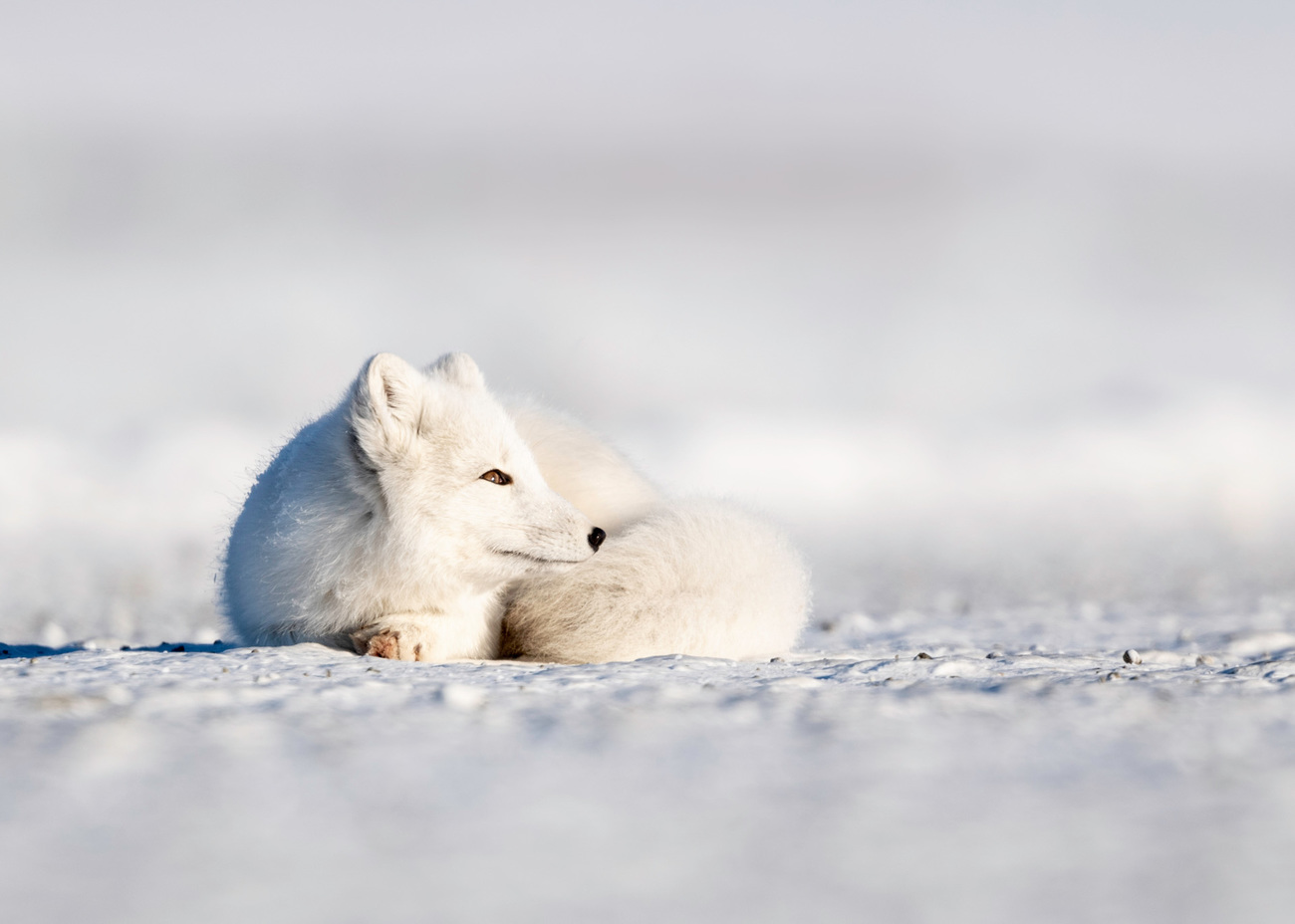
Arctic foxes (Vulpes lagopus) are known for their striking white fur, but they aren’t white year-round. In the summer, they shed their winter coats for shorter, grey or brown fur. Arctic foxes’ winter coat survives multiple purposes—it’s thick enough to keep them warm in temperatures that can fall to negative 50 Celsius, it helps them stay hidden against the white snow while hunting for prey, and it protects them from predators like wolves and polar bears. It also helps conceal them from hunters, who sometimes target Arctic foxes for their fur.
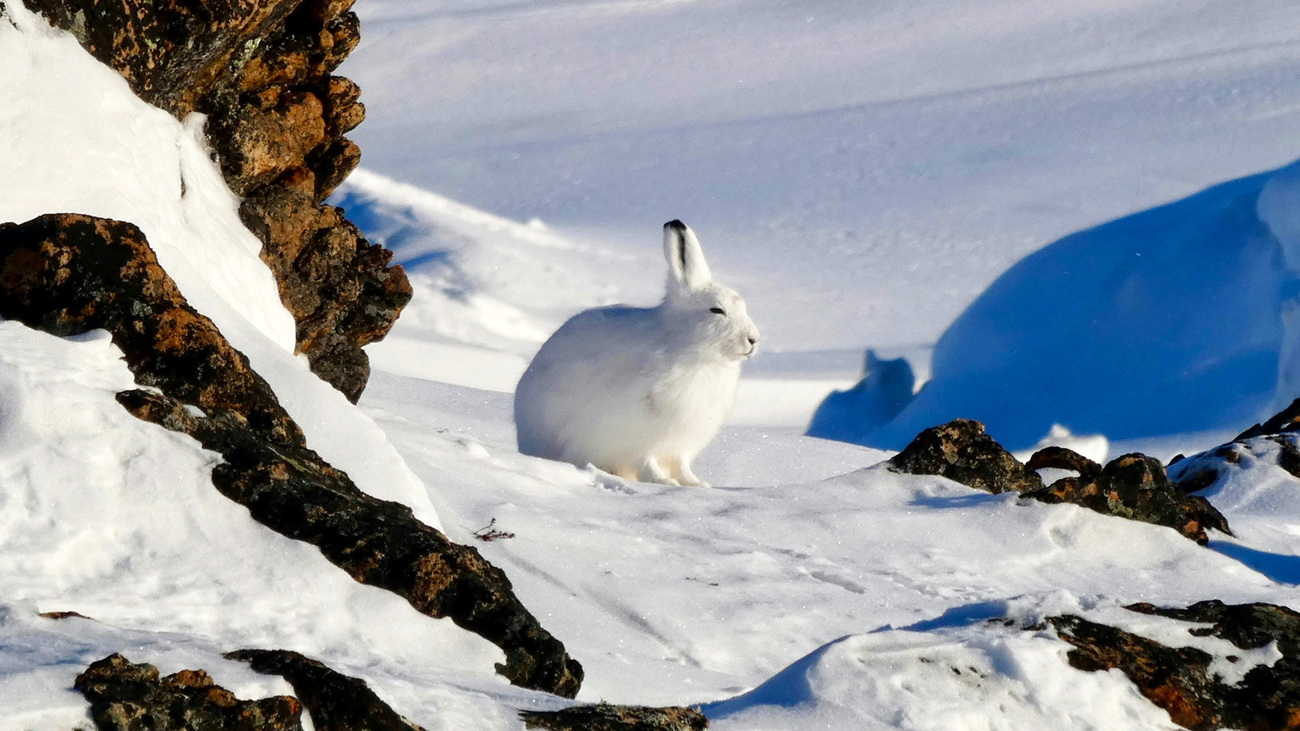
Like their fox neighbours, Arctic hares (Lepus arcticus) have all-white fur in the winter—except for the black tips of their ears. In the summer, Arctic hares also shed their winter coats for greyish-brown fur. Their fur colours help them blend into their surroundings, camouflaging them from predators, which include well-camouflaged Arctic foxes, as well as wolves and lynx.
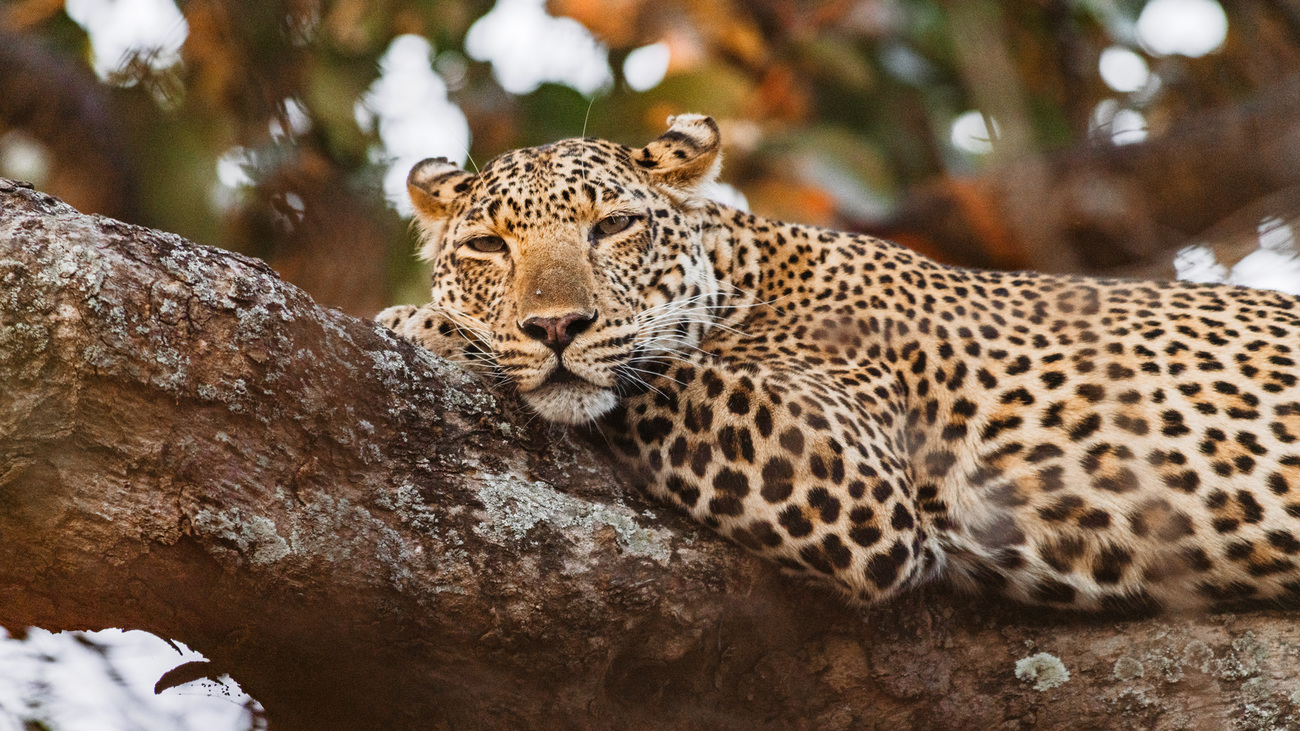
You might think leopards’ (Panthera pardus) contrasting golden coat and black spots make it stand out from a crowd, but leopards are actually great at blending into their surroundings—whether that be trees, rocky cliffs, or grasslands. Found across Africa and Asia, there are a number of leopard subspecies that each have their own camouflage adaptations depending on their unique habitats. Their fur varies from shades of pale beige to darker gold, but all these big cats have the black rosette pattern that makes their camouflage so effective—save for black panthers, which are melanistic leopards with all-black fur. Rosettes help them blend in with their surroundings as they mimic the appearance of shadows and leaves.
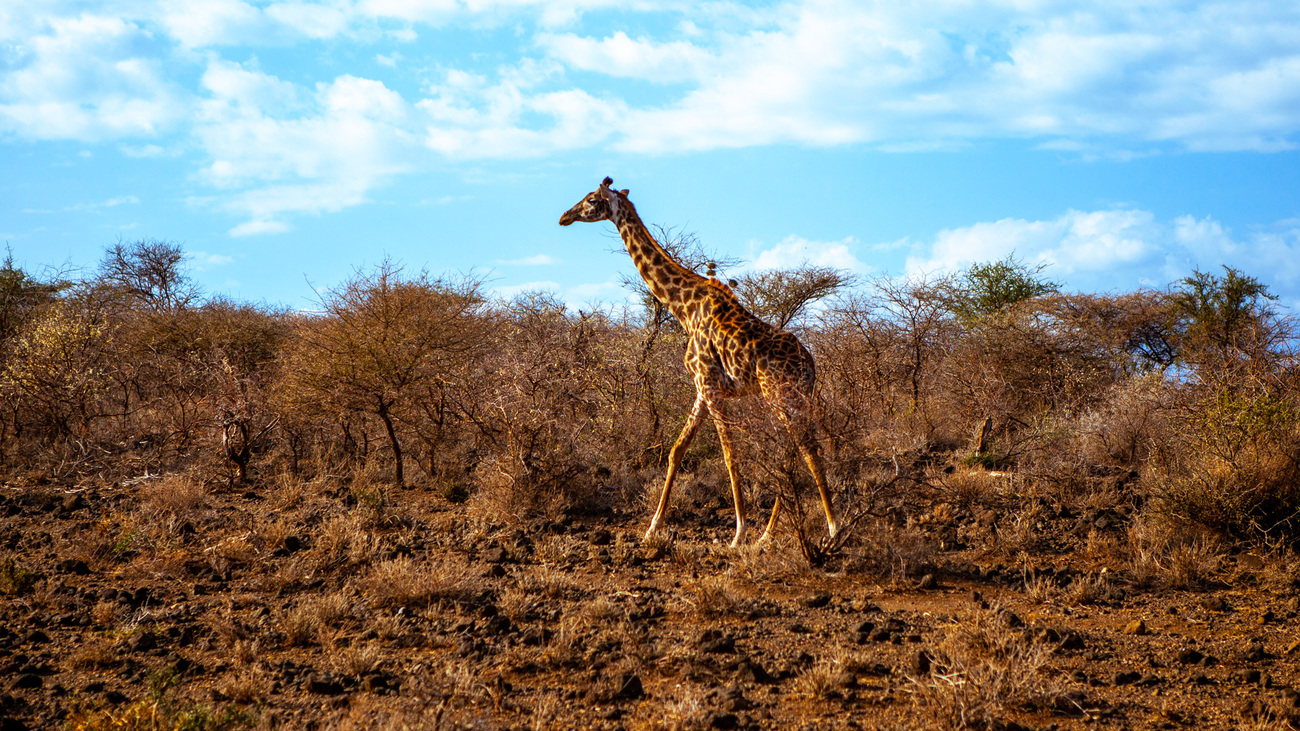
Giraffes (Giraffa camelopardalis) may stand out due to being the tallest members of the animal kingdom, but they have great camouflage, too. Their tan or yellowish coats with darker brown spots help giraffes blend in among tall trees in the forests and savannahs where they roam. Native to Africa, there are nine giraffe subspecies that each have slightly different spot shapes and sizes. For example, the spots of Rothschild’s giraffe are smaller and further apart, whereas the spots of the Nubian giraffe are larger and closer together. Baby giraffes with larger and more irregularly shaped spots have been proven to live longer than others due to the camouflage they provide.
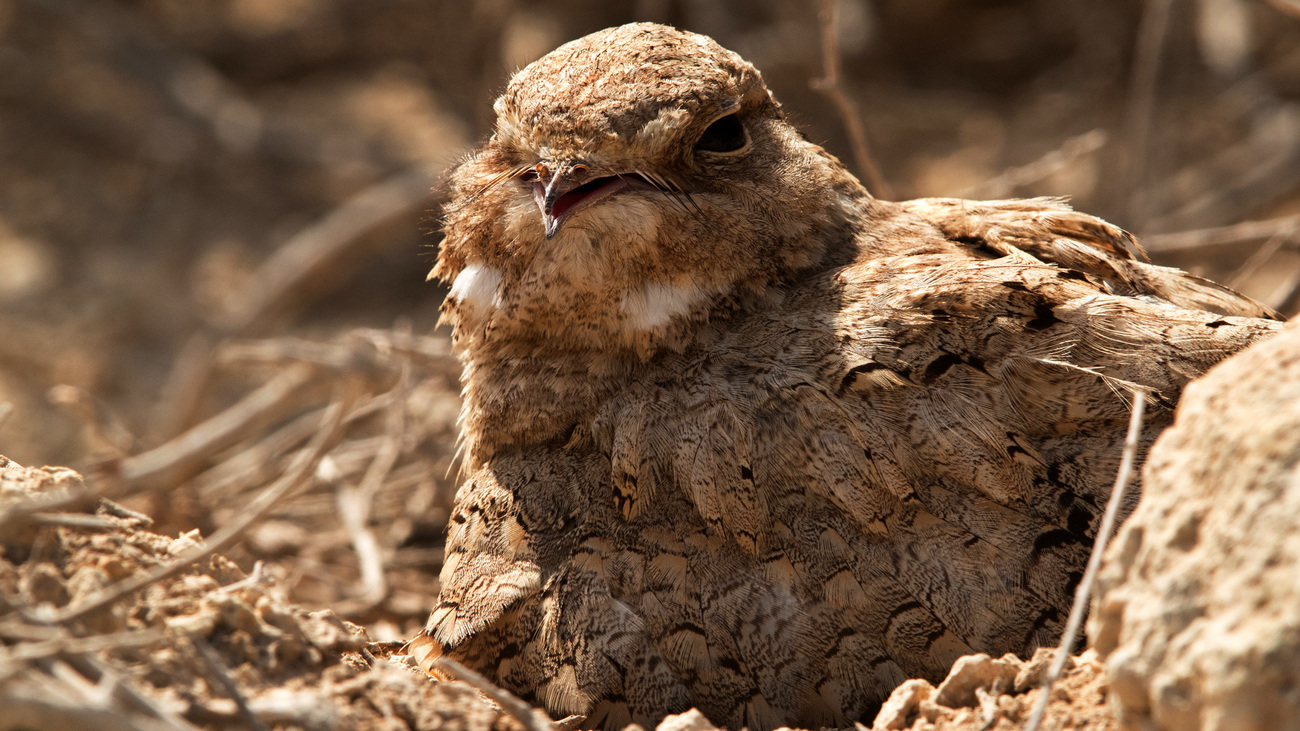
Egyptian nightjars (Caprimulgus aegyptius) are medium-sized birds found in open desert habitats in northern Africa, the Middle East, and Central Asia. They have sand-coloured plumage and can often be seen—or missed—sitting in the sand, where they blend in seamlessly. They are mainly active at twilight, and they sit all day on the ground, relying on their camouflage to stay safe from potential predators.
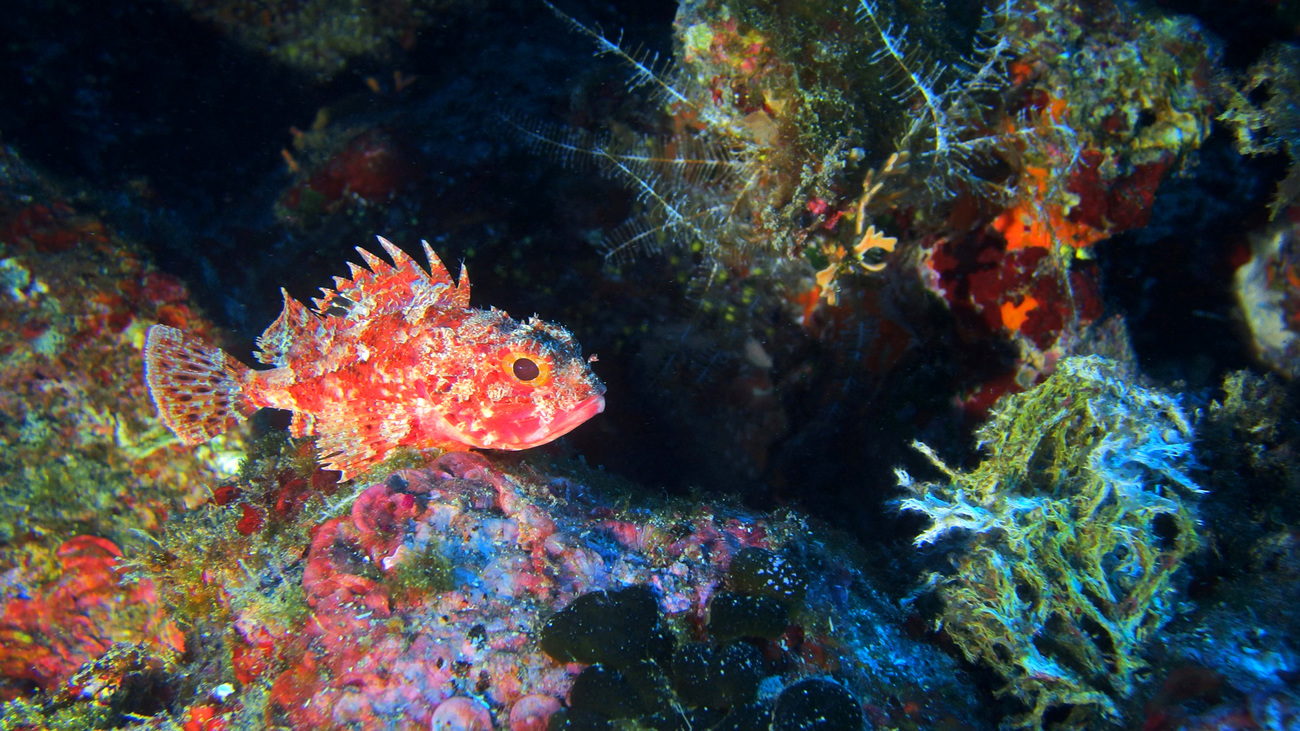
Scorpionfish (family Scorpaenidae) are some of the most venomous fish in the world. Mostly found in the Indo-Pacific region, the more than 450 species of scorpionfish are sit-and-wait predators, meaning they stay concealed in one place until they get the opportunity to attack their prey. Some are known to change colour to match their environments. They spend their time around coral reefs, and their colouring can match the coral’s rocky texture.
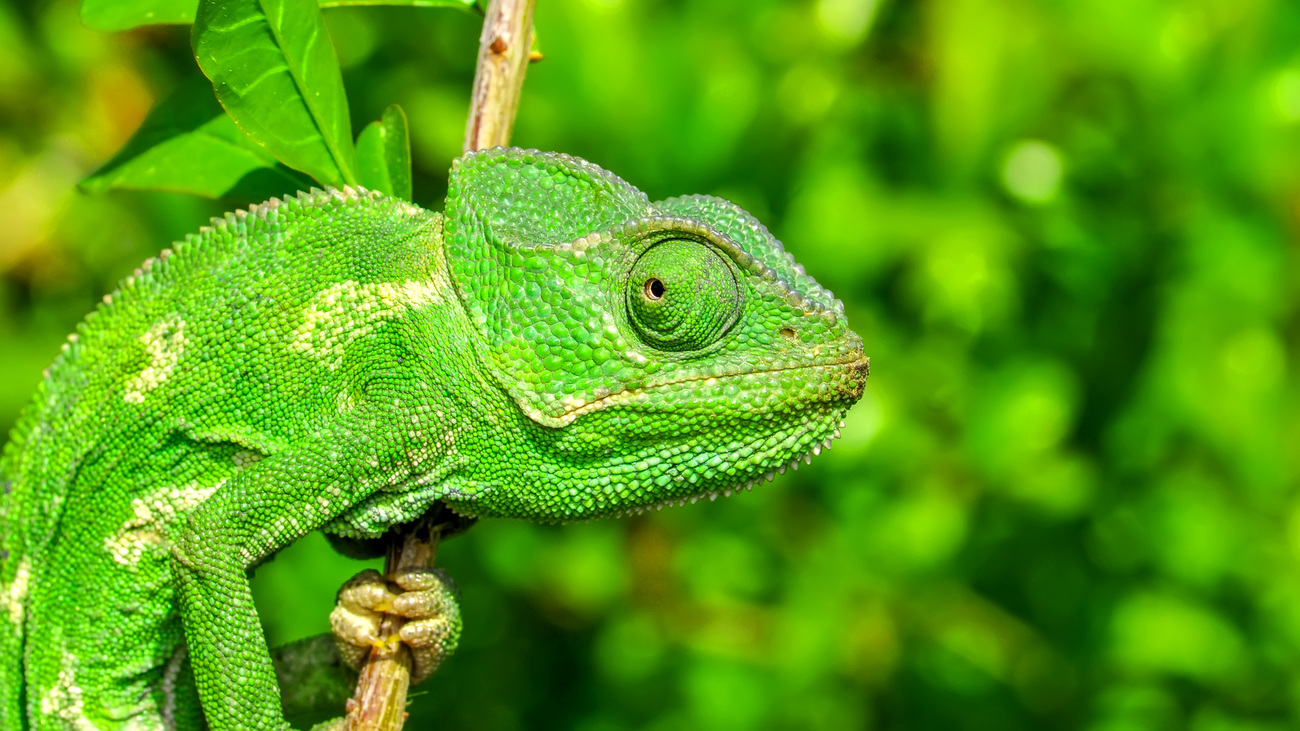
Chameleons (family Chameleonidae) are reptiles well-known for their colour-changing abilities. While some chameleons can only change their brightness—shifting from light to dark shades of brown, for instance—others can change colour completely. Chameleons are found all over Africa and also in parts of southern Europe, the Middle East, India, and Sri Lanka. Their colour-changing abilities don’t just help chameleons camouflage themselves—they also help individuals communicate with one another and regulate their body temperature.
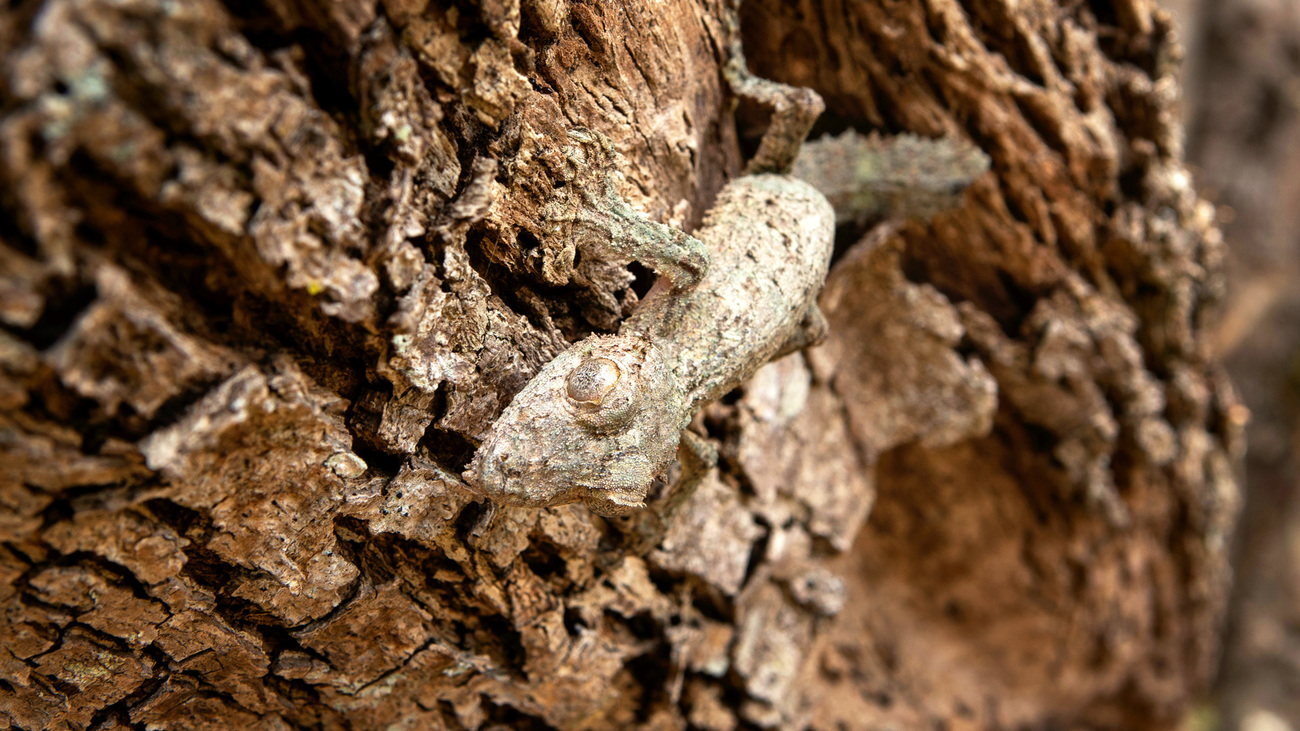
As their name implies, mossy leaf-tailed geckos (Uroplatus sikorae) resemble both moss and leaves. Their bodies are coloured to match moss, lichens, and tree bark, as they spend much of their time in the trees of Madagascar’s forests. Their tails are wide and flat, resembling leaves. Their camouflage helps them avoid being preyed on by larger animals like rats, snakes, and birds of prey.
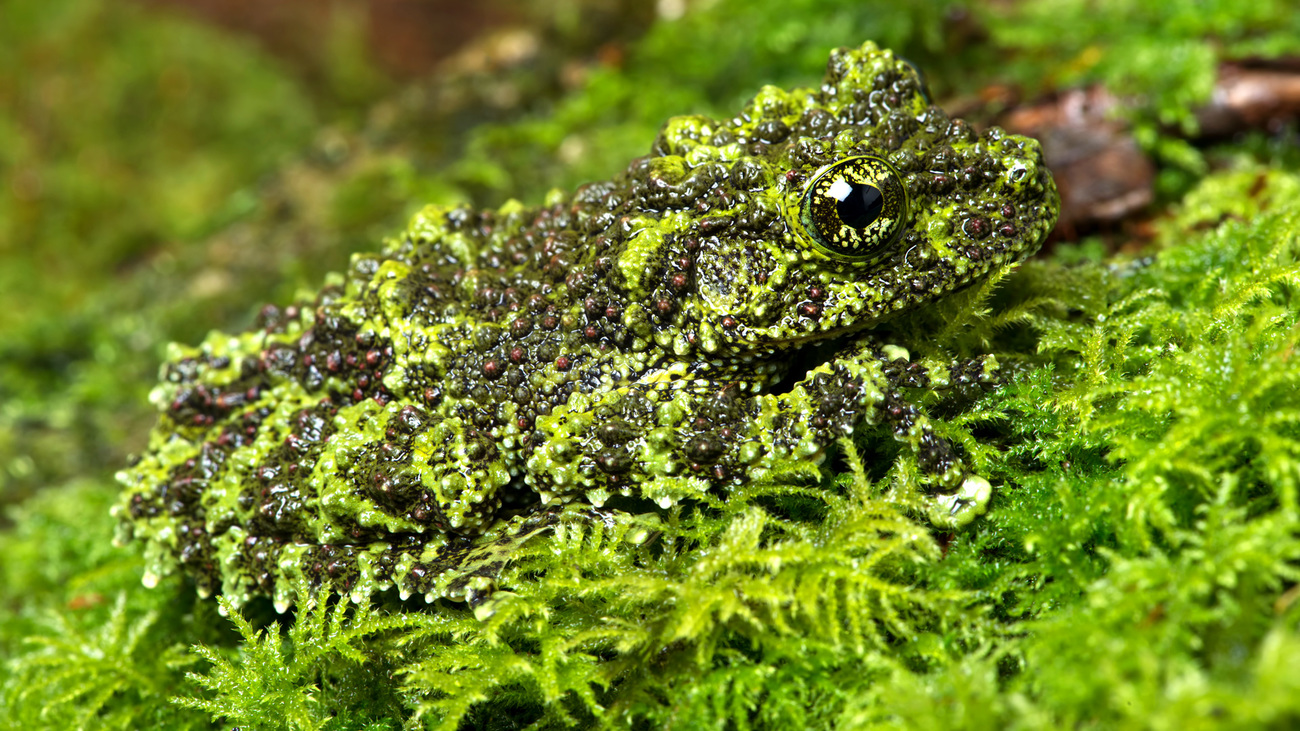
Vietnamese mossy frogs (Theloderma corticale), also known as Tonkin bug-eyed frogs, get their name from their mottled green and brown colouration and bumpiness, which together help the frogs resemble moss. When threatened, these frogs will curl up into a ball or play dead, using their camouflage to their advantage. They’re found in wet moss, water-filled tree holes, and rock cavities in Vietnam, Laos, and southeastern China.
Like their Arctic cousins, mountain hares (Lepus timidus) need good camouflage to protect themselves from predators like foxes, stoats, cats, buzzards, and eagles. They are primarily found in northern Europe, the British Isles, the Alps, and northern Asia. Just like Arctic hares, they molt from a white coat to a brown coat as the seasons change. However, due to less snowy winters in some areas as a result of climate change, their white winter coats are starting to become a problem, causing them to stand out rather than blend in.
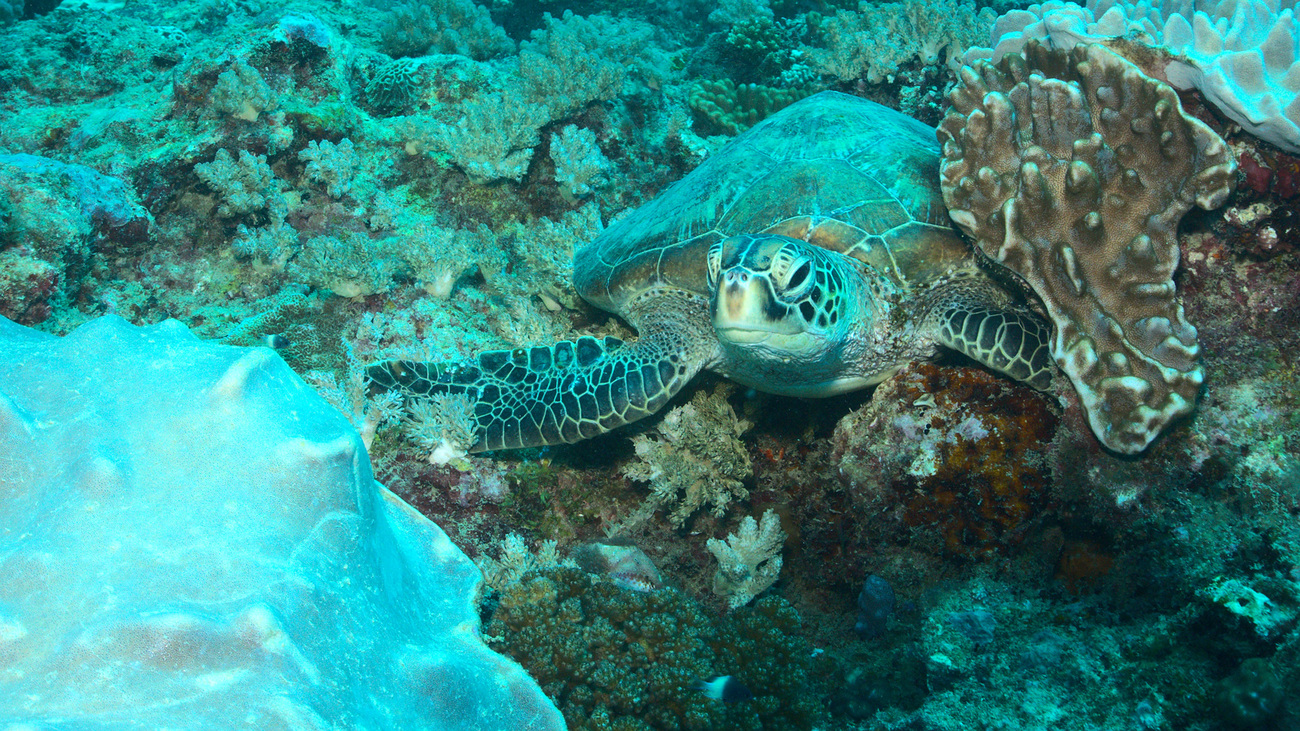
Endangered green sea turtles (Chelonia mydas) are found in tropical and subtropical marine habitats around the world. They are not bright green but rather appear shades of dark brown, grey, and olive. Their body colouration uses what’s known as ‘countershading’, meaning their backs are dark and their lower surfaces are light. This protects them from predators—which, for adult sea turtles, are primarily sharks—as when seen from above, their shell blends in with the dark colours of the ocean. On land, baby green sea turtles—which are born with black shells—can coat themselves in sand to hide from smaller predators like crabs, dogs, and raccoons.
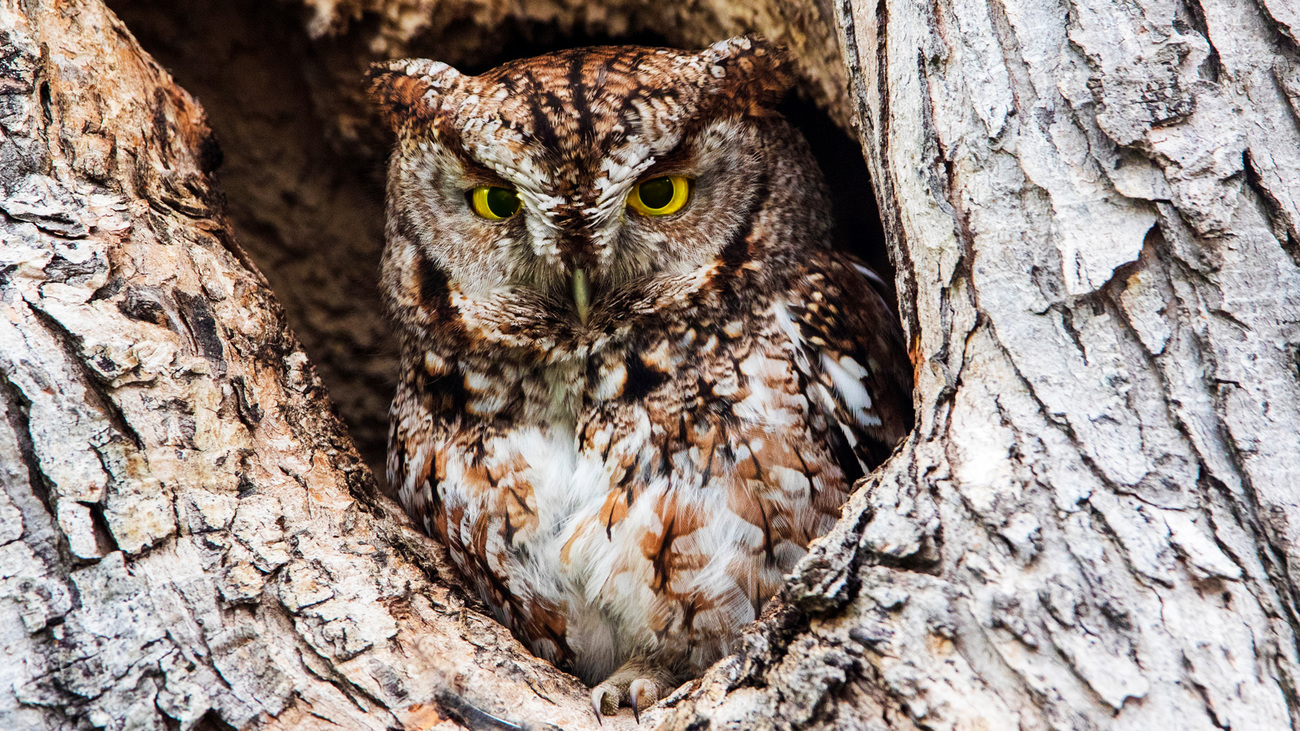
Found across North America as far west as Montana, eastern screech owls (Megascops asio) can blend in with their surroundings due to their dark vertical stripes, which resemble tree bark. During the day, they hide out in hollowed dead trees and other dark spaces. They’ve been known to take extra precautionary measures to make themselves invisible like squinting their eyes, turning their heads, and covering their faces with their wings. An eastern screech owl may also position itself in a way that fills the entrance to the tree cavity where it hides, so it blends in excellently with the bark. The predators of eastern screech owls include skunks, raccoons, mink, and other owls.
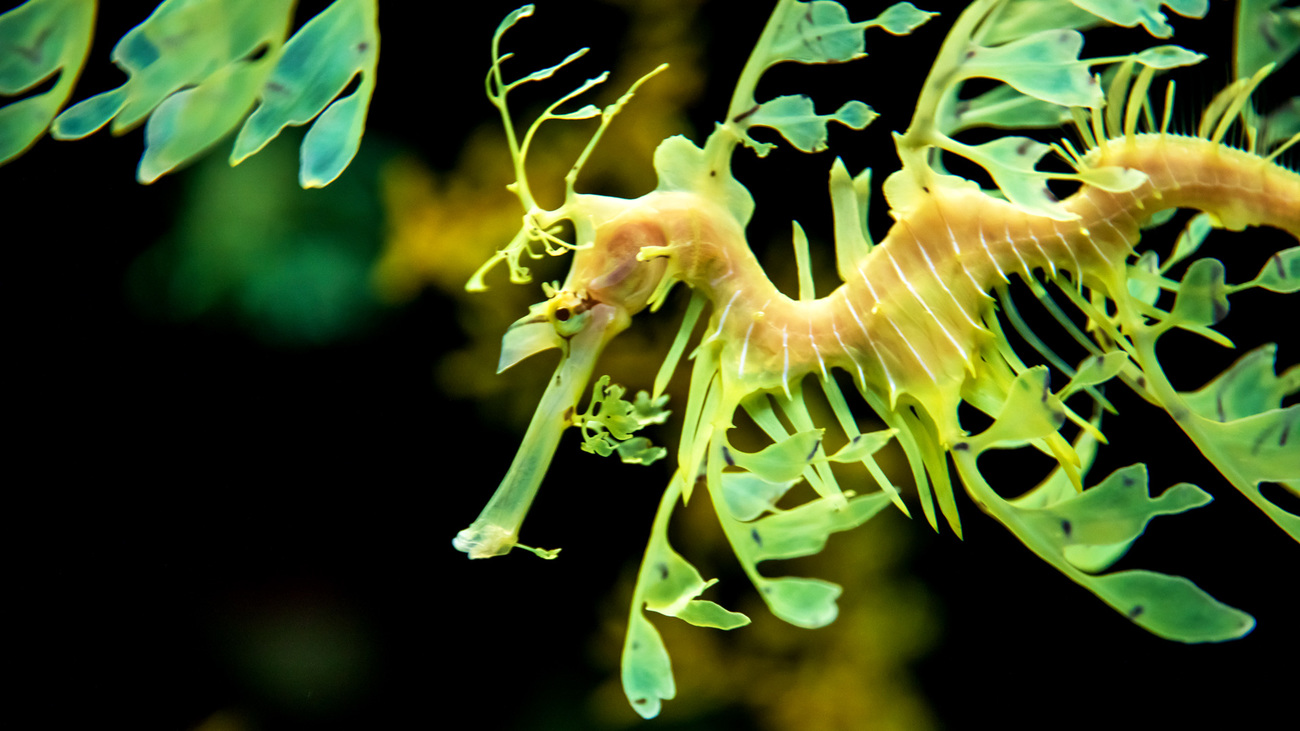
Leafy seadragons (Pycodurus eques) are fish related to seahorses found along the southern coast of Australia. They are famous for their appearance, which resembles a branch with leaves—or a piece of seaweed. The leaf-like protrusions on a leafy seadragon’s long, thin body don’t serve any purpose other than camouflage. While young leafy seadragons are hunted by crustaceans, larger fish, and sea anemones, adult leafy seadragons don’t face any predators due to this incredible adaptation.
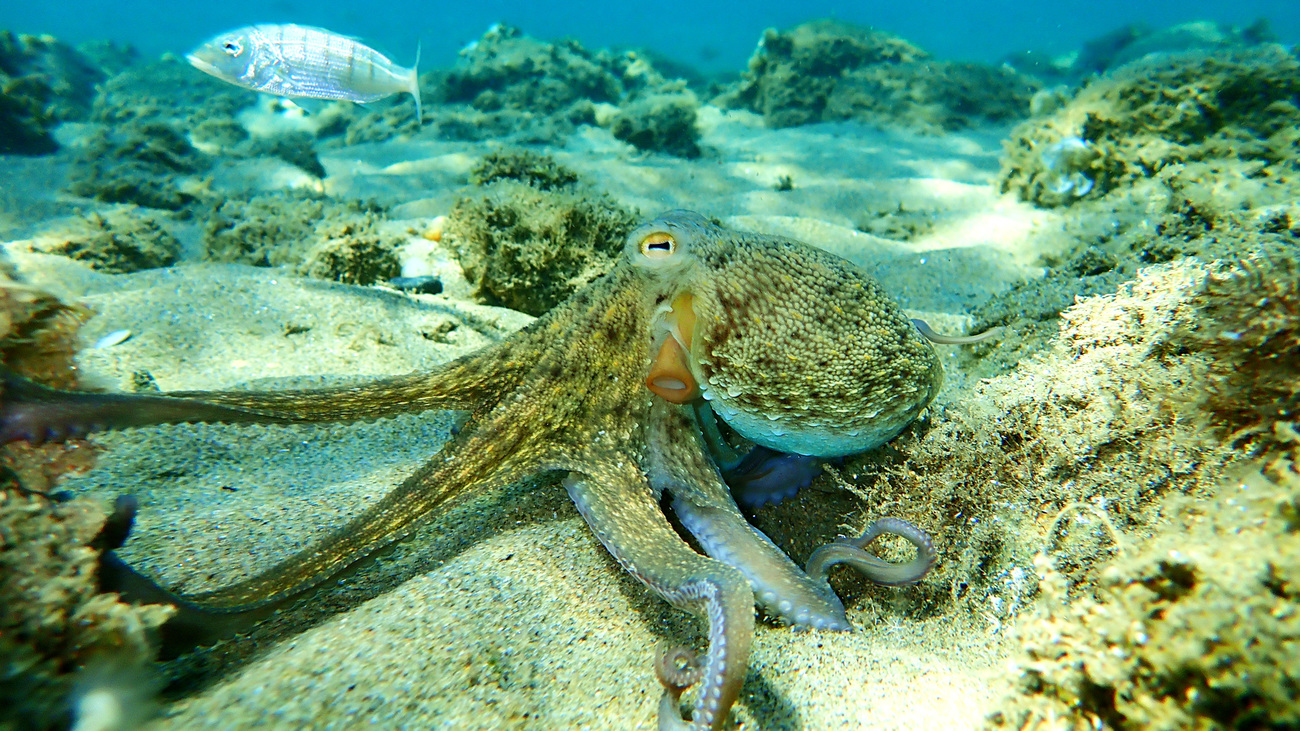
Octopuses (order Octopoda) can change colours to attract a mate or communicate warnings to each other, and this ability can also serve as camouflage. Underneath their skin, they have chromatophores, which they control using their nerves and muscles. Each chromatophore has a small sac of pigment that can expand or contract, making colours appear brighter or duller. They can change colour much faster than chameleons—it happens in seconds. Beyond changing its colour, octopuses can also change the texture of their skin by controlling the size of their papillae, resembling rocks, sand, or coral, depending on their surroundings.
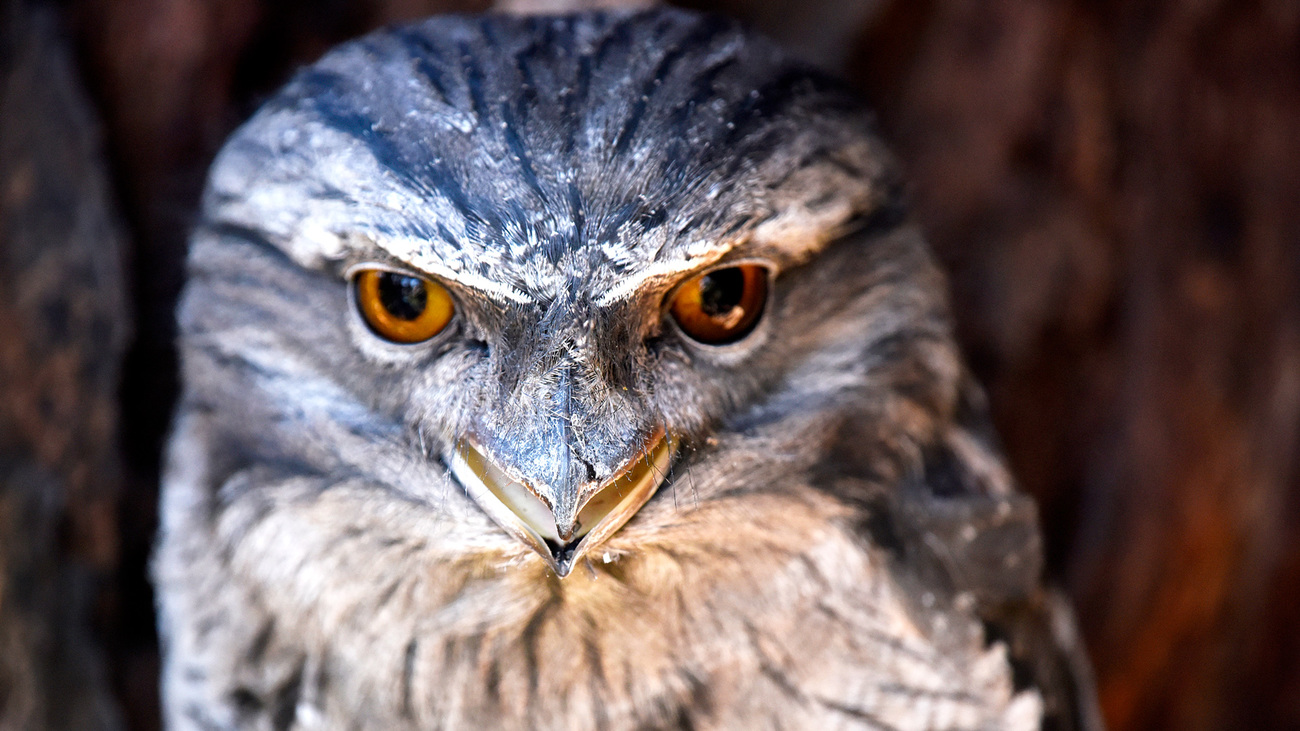
Tawny frogmouths (Podargus strigoides) are nocturnal birds similar in shape to owls, known for their huge gapes that resemble the mouth of a frog. They are found in Australia, and the streaked pattern of their grey and brown feathers closely resembles tree bark. During the day, they perch on low tree branches or broken branches on the ground, and they position their heads in a way that makes them nearly invisible, appearing to be a spur of the broken branch itself.

Jaguars (Panthera onca) have a coat similar to leopards, a pale colour with rosette-shaped black spots. This rosette pattern helps them move through the rainforest as it mimics the shadows of leaves. Their camouflage allows jaguars to remain hidden while they stalk their prey, which includes small mammals, reptiles, birds, and fish, though jaguars also rely on their speed, strength, and stealth.
Want to learn more about the incredible animals IFAW works to protect? Check out our animal pages, or take action for animals by signing our petitions.
Our work can’t get done without you. Please give what you can to help animals thrive.
Unfortunately, the browser you use is outdated and does not allow you to display the site correctly. Please install any of the modern browsers, for example:
Google Chrome Firefox Safari